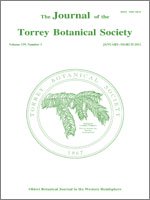Climate change predictions for the Great Plains region of North America include increased temperatures and changes to annual precipitation patterns. We used ecological niche modeling (Maxent) to assess how three climate change scenarios published by the Intergovernmental Panel on Climate Change might affect the distribution of the threatened lace hedgehog cactus (Echinocereus reichenbachii) by the 2050s and the 2080s. Under all scenarios investigated, the total land area of suitable habitat for the species increased relative to the current land area predicted as highly suitable by the model. However, under all scenarios, the center of the most suitable area for this species shifted by 160–604 km from the current location in northwest Texas, changing at a rate 20–75 km per decade. While the rate of dispersal in this species is not known, Echinocereus spp. seeds are typically spread by small mammals and it seems unlikely that this species will be able to disperse rapidly. Consequently, the range may initially contract during the coming century, especially in southern Texas where it is most imperiled and where the climate is predicted to become increasingly unsuitable. The current patchiness of distribution of the species suggests that microhabitat characteristics and limitations to dispersal might reduce its actual realized niche relative to the fundamental niche indicated by the models. In addition, land use for agriculture, grazing, and urbanization might further reduce the success of this species in a changing climate.
How to translate text using browser tools
1 January 2012
Distribution of the threatened lace hedgehog cactus (Echinocereus reichenbachii) under various climate change scenarios
Christopher J. Butler,
Eric A. Wheeler,
L. Brooke Stabler
ACCESS THE FULL ARTICLE
conservation
dispersal
ecological niche modeling
range shift





